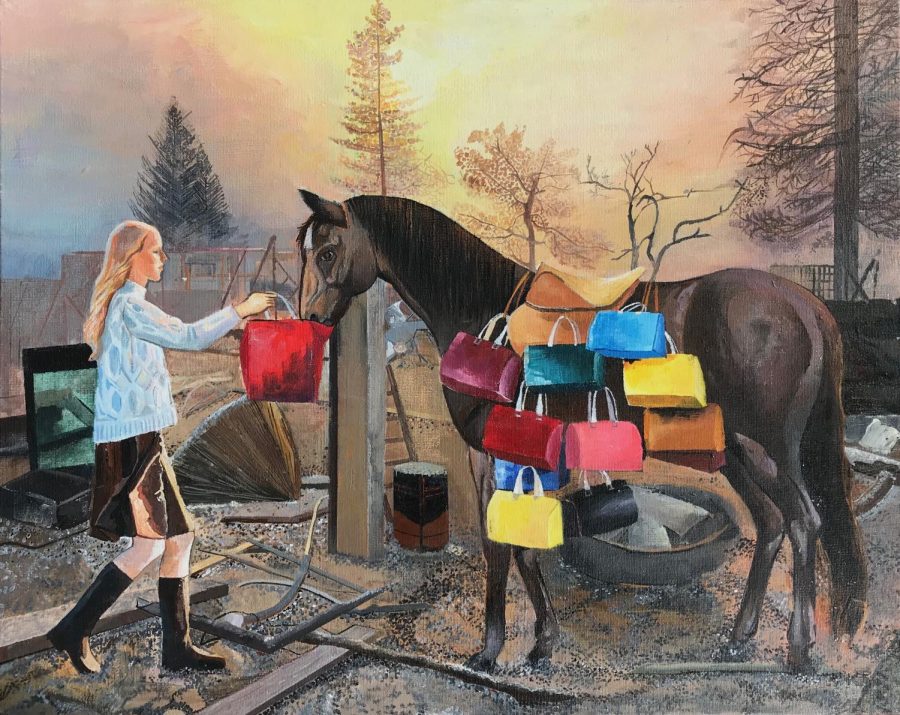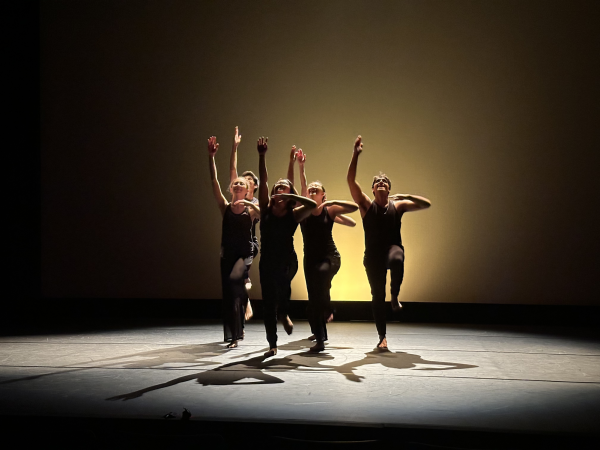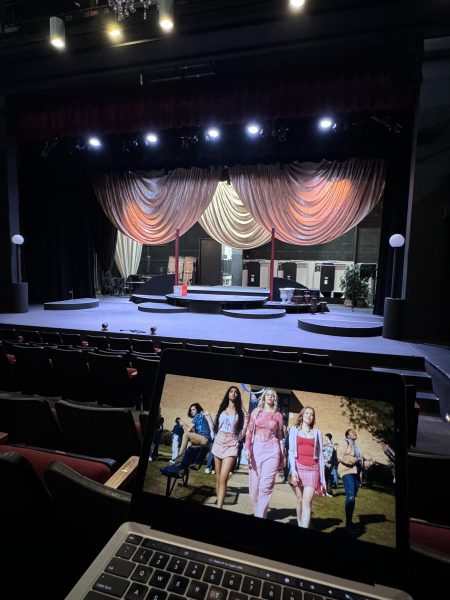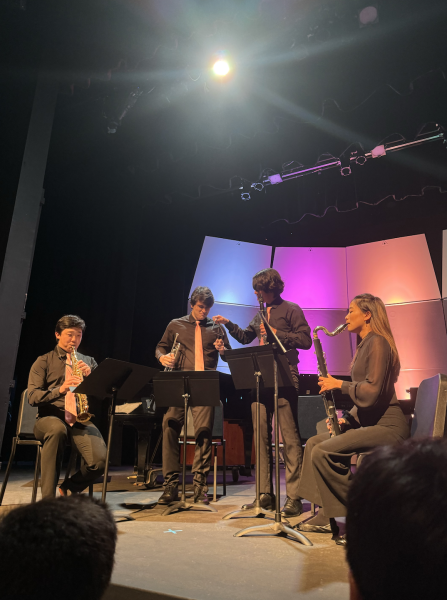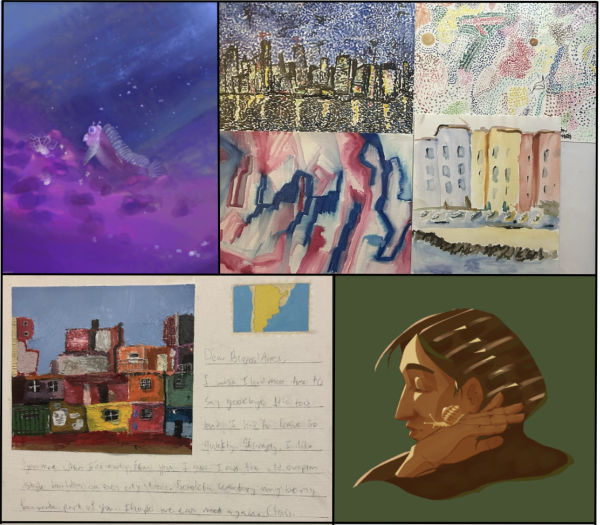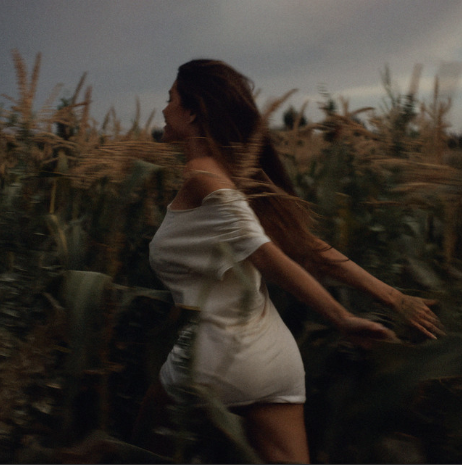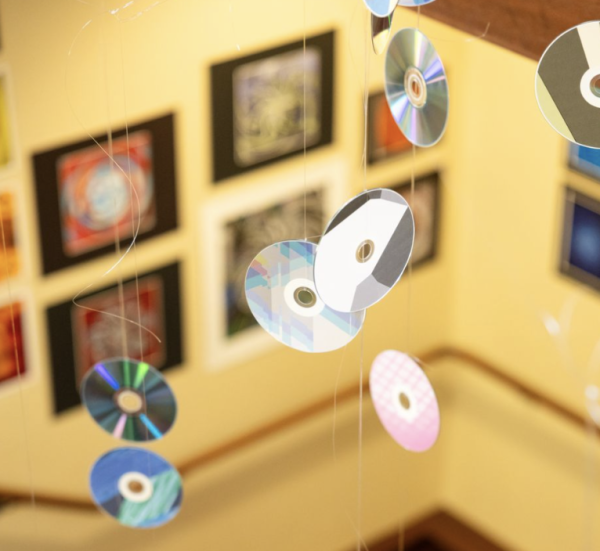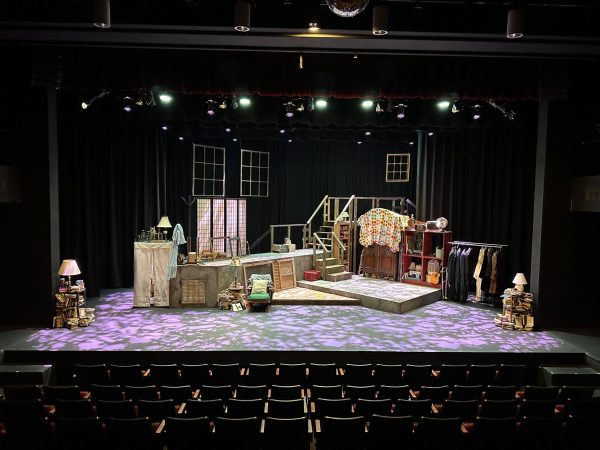Activism Through Art: Sharisa You’s Senior Art Exhibition
This painting, called Among the Ashes, was inspired by the California wildfires and society’s obsession with material goods. “When people hear evacuation, the first thing they think of is all the stuff they have to pack up,” Sharisa explained.
You might have seen the vibrant artwork of Senior Sharisa You gracing the stairwell on your way to the library’s bottom floor. A solitary brown canoe. A horse laden with rainbow packages. A charcoal-drawn woman shrouded in COVID headlines.
“I wanted to showcase a lot of the different styles I’ve tried over the years,” she explained.
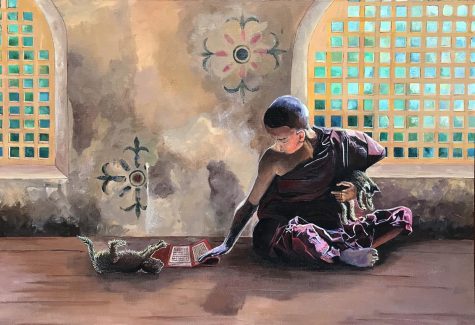
Sharisa has spent a significant portion of her life on art and has been working on her portfolio throughout high school. She’s attended art classes since the age of three and has worked her way up to her vivid and diverse art exhibition in the library. The guiding question of her AP portfolio and exhibit: how can art spread awareness about social or political issues?
While she started lessons outside of school at a barely-toddling age, she still had to work diligently to produce art she was proud of. “I think that art came relatively naturally to me,” she said. “But I’ve had my fair share of struggles.”
She explained that she has trouble portraying faces and human body proportions, as well as just pencil sketching. “People might think this is weird because it seems easier than painting since there’s no color balancing involved, but I don’t know,” she said. “I guess [graphite sketching] was challenging because I grew up doing so much drawing in color pencil.”
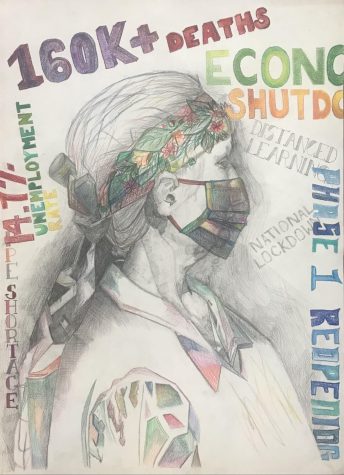
Sharisa joined Bishop’s in sixth grade, and, as she grew up and had elective abilities, began to take art classes in school. In middle school and freshman year, she took Drawing and Painting I and II, then did an independent study sophomore and junior years, working on her AP Art Portfolio. She had a significant amount of technical experience with art at that point, due to all her lessons, but grappled with expressing creativity.
“I don’t think it was that I wasn’t creative,” Sharisa said. “I was taught in a way that all my art that I was doing, up until middle school was some form of replication. When I came into [Chair of Visual Arts] Ms. [Elizabeth] Wepsic’s class, none of the kids around me had art learning experience, but their creativity was so much more vibrant than mine.” She said that sparked something in her, as she realized that art was not about repetition, but rather self-expression and trying new techniques. “My work started to become more original and creative.”
She has a natural inclination towards paint, but several of her pieces include other techniques, such as her COVID-19 news headline piece, which was pencil and colored pencil. In the painting, Refuge, a tale of immigration, she used knife palette technique—one of her favorites—on the water.
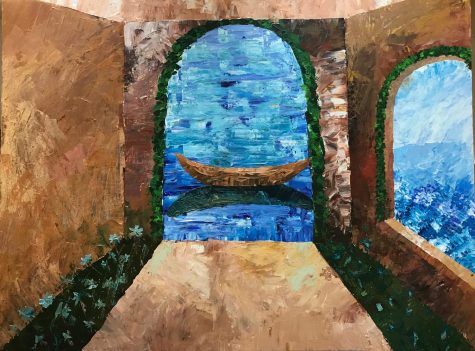
“That’s something I’ve been trying to do—experiment with a lot of different styles, not just focus on one and try to get better at it,” she said. “I feel like this diversifies your portfolio and it diversifies how you use media, even if that’s not the media you’re practicing.”
Sharisa explained that she has always understood that art is not simply about looking pretty; rather, it’s about telling a story. One of her first memorable experiences with art was looking at Georgia O’Keeffe’s artwork and marveling at how such simple brush strokes could be so evocative. O’Keeffe is known for her paintings of flowers and the New York skyline, and is often called the Mother of American modernism. “There’s something so simple about the paintings and the color tone of them that makes them so smooth and flat—but in an appealing way,” Sharisa explained. “That really stood out to me.”
So when Sharisa began planning her AP Art portfolio several years ago—the majority of which is displayed in her exhibition—she knew she had to tell a story. “I don’t do just any global issues,” she said, explaining that it had to stand out to her or have some special significance.
She has covered topics from COVID-19, to rights to education, to obsession with superficial items, to child labor, to refugees, to women’s rights. It might be hard to glean which topic a piece of artwork is covering without reading the title and artist statement, or thinking about it in depth. For example, Among the Ashes may look like just a landscape at first glance, but Sharisa was portraying the sense of intense materialism during the California wildfires.
“I think that Sharisa’s painting of the woman with the horse and the purses is incredibly creative and impactful,” Ms. Wepsic explained. “[She combines] her expertise in acrylic paint, with realism and detail…with her awareness of social issues and imagination.”
Her favorite of all of them has been homelessness (as shown in The Untold Truth). When writing a research article about homelessness in the United States in comparison to other countries, she discovered that San Diego has the fourth highest homeless population in the country: a fact that shocked her.
She then participated in an activity with Community Service Initiative (CSI) that involved handing out meals in downtown San Diego. “Getting to have conversations with them [the homeless] and actually getting to know them on a personal level was a completely different experience to me,” she reflected. She knew immediately that she wanted to create art about it.
Sharisa draws on both her artist’s eye and her perspective as a human being. “There’s so much work in museums that—as an artist—leaves me thinking. I just keep wanting to go back there and absorb every single detail, and I feel like that’s the captivating part of art that no other medium on this earth can hold.”
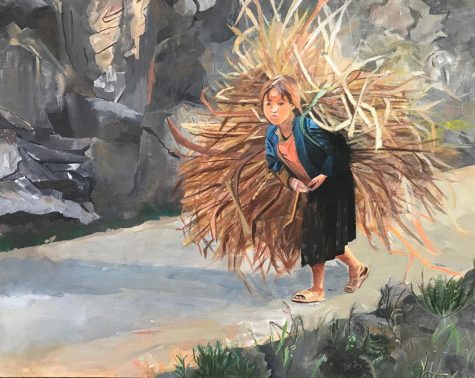
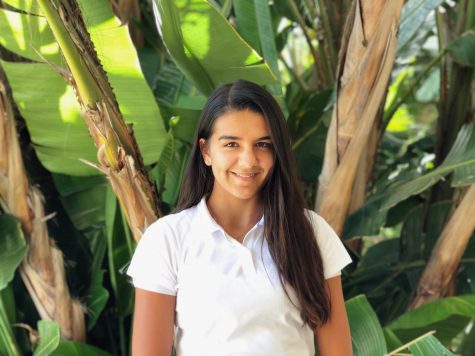
Clare Malhotra was born in Boston, Massachusetts and moved to La Jolla at age nine. She is currently a senior, and this is her third year on The Tower....


